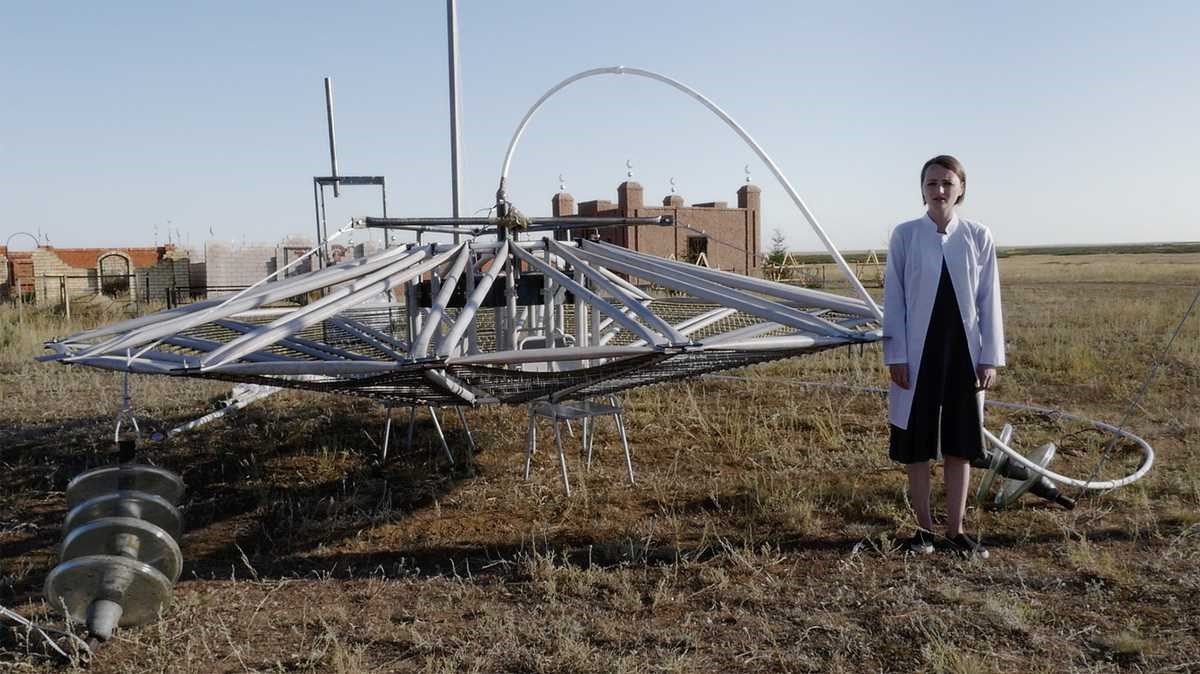What does sunspot activity have to do with our political tides? Comrade Sun at Kunsthalle Wien tries to align our social world with an astral one
The first thing you see in this elliptically titled 14-artist exhibition is not art. It’s a wall-filling graph that correlates sunspot activity, which peaks and dips in an approximately 11-year rhythm, with events in modern history since the French Revolution. The Europe-wide revolutions in 1848? Lots of sunspots then. The Russian Revolutions of 1905 and 1917? Ditto. Prague Spring of 1968, fall of Communism in 1989–90, Arab Spring of 2010? Sunspots. Periods of low solar activity, meanwhile, seemingly track to financial crises and, lately, tension-incubating lockdowns. This parallelistic research was developed by Soviet scientist Alexander Chizhevsky during the 1920s and 30s – Stalin later put him in a gulag for it – and has been continued by others since. Comrade Sun’s curators, in the exhibition booklet, say that their show ‘unites the political with the poetic to evoke pleasurable, speculative associations between the revolutionary, the celestial, contemporary art, and their effects on our daily lives’. But they also note that Chizhevsky himself never claimed the sun as the sole agent of revolutions; it might be a helper, he thought – hence ‘comrade’ – but people have to do the work too. (See also: political art.) What this leads to here is a succession of artworks – mainly moving image, that most light-based of media, and often in essay-film format – in which the sun and some kind of upheaval are variably aligned.

Most closely tethered to the curatorial gambit is Anton Vidokle’s The Communist Revolution was Caused by the Sun (2015), which fleshes out Chizhevsky’s life and work over footage of rural Kazakhstan, where the scientist was incarcerated – some people still getting around on horses, others standing by pieces of tech intended for Soviet spaceships but given to government officials instead. The Otolith Group’s In the Year of the Quiet Sun (2013) tracks back to 1964–65, a time of low solar activity. At this point, as the film documents, many African countries that had experienced a decade of burgeoning Pan-African, anticolonialist sentiment and newfound independence made pretty, hieratic commemorative stamps featuring the sun; the film emphasises the ironic disconnect between the stamps’ sunny quietude and, as the 60s went on (and sunspot numbers rose again), rising authoritarianism, unrest and regime changes. In Gwenola Wagon’s climate-collapse fable Chronicles of the Dark Sun (2023), meanwhile – one of two videos here, alongside Maha Maamoun’s 2026 (2010), that directly reference Chris Marker’s 1962 sci-fi short La Jetée – climate change has forced humans to somehow block the sun’s light in order to subsist on Earth. Hiding in subterranean bunkers, they develop an AI that extracts memories – which we see as snapshots and clips from adverts that Wagon herself has AI-processed – from someone who remembers daylight, and this subjective, modified take becomes humanity’s image of its collective past.


There’s several hours’ more video here, connecting the sun to subjects including Mexican resistance movements and the Lebanese Civil War, and it’s all navigated via sketchy Bluetooth headphone connections as one moves among freestanding screens in darkness. Accordingly, one initially becomes grateful to encounter variously spotlit non-moving-image works. Sonia Leimer’s Space Junk (2020–24) sculptures advertise how humanity has extended its cavalierly despoiling attitude towards Earth to the heavens: often fragmented or damaged metal spheres, they resemble specific bits of metal detritus from ‘disused satellites and spaceships’. At the same time, in standing outside of the filmic focus, the show’s sculptural and 2D works can feel like satellites themselves, and this isn’t helped by their disparateness. Hajra Waheed’s How long does it take moonlight to reach us? Just over one second. And sunlight? Eight minutes. (2019) is a 6 x 5 grid of sheets of paper bleached in stationers’ windows, rendered unsaleable and snapped up by the then-penurious artist, here arranged into a pale pattern of different hues. Accompanied by another sheet featuring the title phrase, it’s a pro-solar energy piece that uses the sun as a generator of abstract, minimalist beauty. This sits weirdly beside GDR painter Wolfgang Mattheuer’s The Neighbour Who Wants to Fly (1984), whose canvas of a suburban Icarus rising from allotment gardens stays tight-lipped about who, in the context of a then-divided Germany, the doomed ambitious ‘neighbour’ is. Kerstin Brätsch’s frenetic PARA PSYCHIC drawings from 2020–21, in turn, imply restiveness in lockdown but mostly seem included because one of their subtitles invokes Georges Bataille’s concept of the ‘solar anus’. Yet that reference works in context, because if you extend Comrade Sun’s thesis to consider that the sun’s periods of low activity help gestate those problems that its moments of high activity bring to a head, it’s clear that the sun is only sometimes a comrade. At other times, it’s kind of an asshole.
Comrade Sun at Kunsthalle Wien, through 1 September
